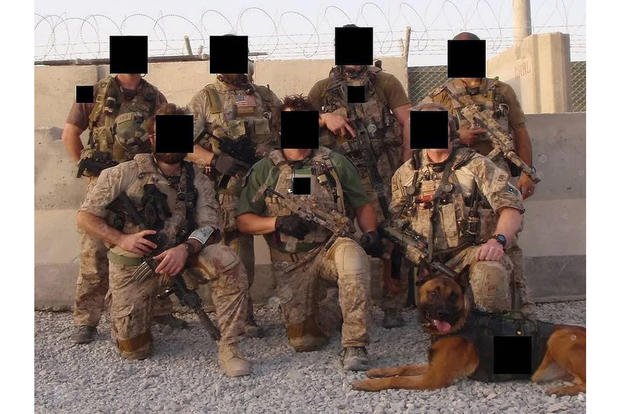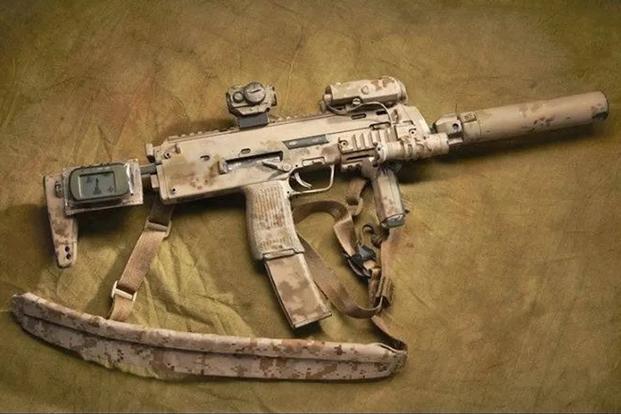Looking almost like an oversized pistol, the Heckler & Koch MP7 is a cross between a submachine gun and a carbine that serves around the world in the hands of law enforcement and special operations units.
In the late 1980s, NATO developed requirements for a next-generation personal defense weapon that would be more effective against body armor than current pistol-caliber PDWs. While submachine guns based on the .45 ACP or 9mm deliver plenty of stopping power against unarmored targets, the growing availability of capable and affordable body armor meant that something new was needed.

So German gunmaker Heckler & Koch developed the MP7 to meet these NATO requirements and it has served across the world since entering full production in 2001.
Some of the most commonly-spotted submachine guns in the hands of law enforcement and other professionals are the MP5 and its successor, the UMP. These guns typify the classic submachine gun, being automatic weapons chambered for pistol cartridges.
The MP7, however, is chambered for the 4.6x30mm cartridge. The steel core 4.6x30mm was developed specifically to be a lightweight pistol-ish round delivering the penetration more like a rifle cartridge. The smaller, lighter round means that more ammunition can be carried and that it has a minimal recoil even in full-automatic shooting.
The 4.6mm cartridge was developed by HK for the MP7 and its companion sidearm, the UCP pistol. The UCP never got past the prototype stage, but the 4.6x30mm has definitely made its mark in the MP7.
The MP7, currently being produced as updated models MP7A1 and MP7A2, weighs less than 5 pounds with a loaded magazine and is only 25-inches long with its adjustable stock fully extended. The barrel is 7.1 inches long and the magazine feeds into the pistol grip, creating a compact, easy to handle package.
The action is a gas-operated short stroke piston like that of HK's HK416 rifle and is rated at 950 rounds per minute. A folding forward vertical grip comes standard on the MP7, though this has been replaced on the new MP7A2 model with a standard lower rail which allows the user to easily install any grip if desired. A full-length top rail comes with removable folding sights and permits the mounting of any standard optic or other accessory, and side rails can be easily added for additional mounting options.
The 4.6x30mm ammunition means that magazine size is decreased compared to those holding traditional cartridges. A 40-round MP7 magazine is comparable in size to 30-round 9mm magazine like the ones in the MP5. This means more firepower ready for action and fewer mag changes, both of which can easily spell the difference between success or failure in life and death situations.
The MP7 utilizes a great deal of polymer in its construction, and the weapon's light weight, ergonomics, and physical size allow it to be fired accurately with one hand. When the stock is extended and the forward grip used, it suddenly becomes a mini carbine with performance similar to full-sized guns as long at the range stays below 200 meters or so.
Military special forces utilize the MP7 much like they have used submachine guns for decades. Smaller, lighter weapons that can provide automatic fire are invaluable for close-quarters combat and the 4.6x30mm's armor-piercing capability make the MP7 a natural choice for elite units needing compact firepower. The weapon's design and tactical rails mean that the gun can be easily upgraded as needed with off the shelf accessories. Additionally, the MP7 is suppressor-ready, adding another level of utility to an already-capable gun for special operations use.

The U.S. Navy's Naval Special Warfare Development Group, more commonly known as SEAL Team 6, is one of the most famous units that employ the MP7 in the special operations community. Many details of their equipment became known after the 2011 mission that killed Osama Bin Laden in Pakistan, and the MP7 was said to have been chosen by some of the raid's members.
Pistols will remain common sidearms for as long as sidearms are needed. And while standard submachine guns using pistol ammunition will continue to serve a vital role for years to come and carbine-configuration assault rifles will remain the standard infantry weapon in militaries for the foreseeable future, the HK MP7 and other weapons like it will fill a crucial middle ground for those looking for the best of all worlds.
MORE POSTS FROM WE ARE THE MIGHTY:
6 things geardos buy that are actually useful
These are the 62 best COVID-19 memes on the internet
The National Guard has been activated. Is this martial law?
We Are The Mighty (WATM) celebrates service with stories that inspire. WATM is made in Hollywood by veterans. It's military life presented like never before. Check it out at We Are the Mighty.















